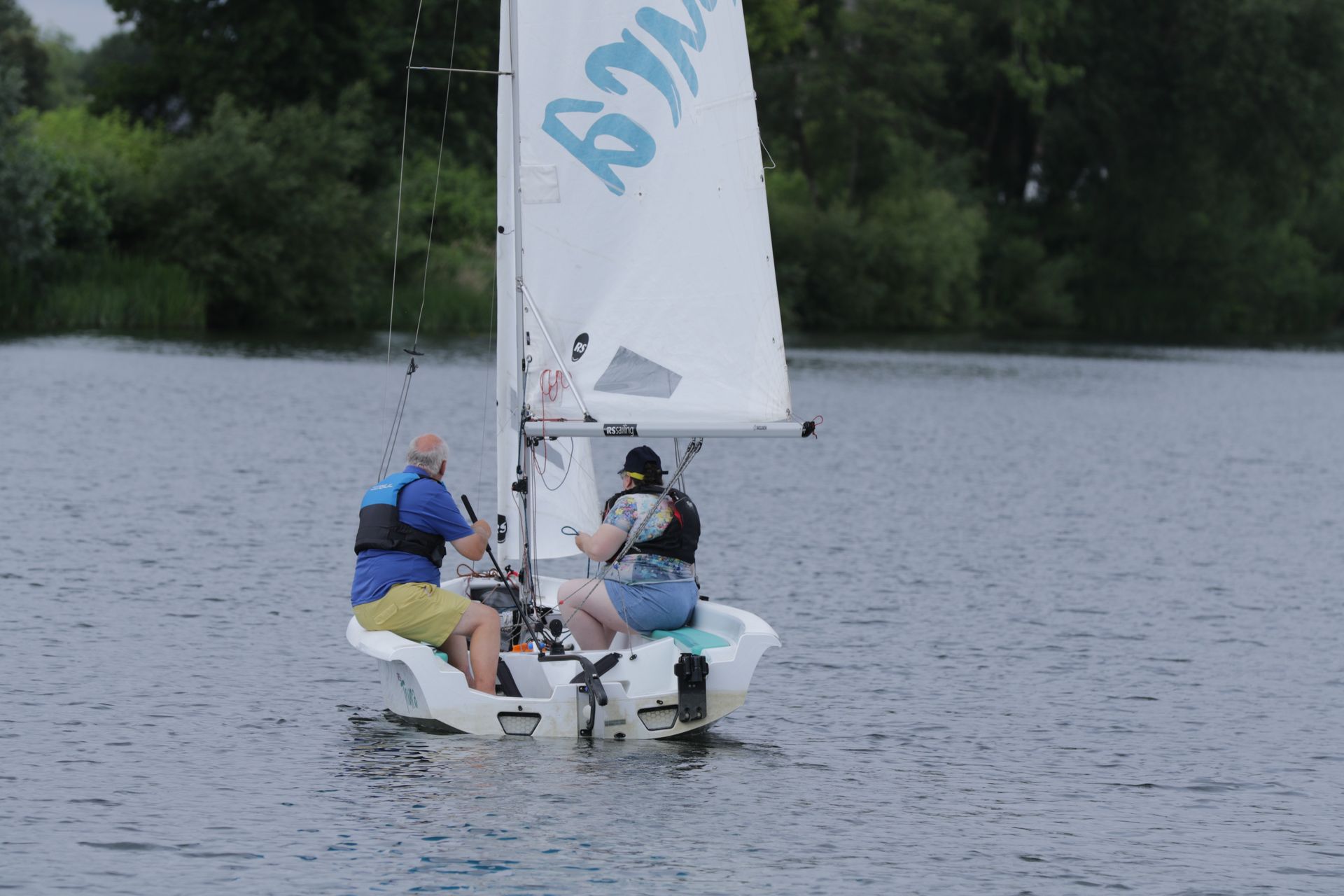admin April 15, 2024 Sailing Previous Lesson Land Drill Comments (0)
The boat turns, the Helm moves. The crews job is to balance the boat and get it level. Then worry about the Jib.
Ah, the allure of sailing! The wind in your hair, the sun on your face, and the promise of adventure just over the horizon. But before you can channel your inner Captain Jack Sparrow, there’s one thing you need to master: balance.
And not just the “I had one too many margaritas last night” kind of balance. We’re talking about the fine art of keeping your boat upright while not looking like a flailing octopus.
The First Lesson: Why Is the Boat Leaning?
You step onto the boat, feeling all cool and nautical. Your instructor, let’s call him Captain Crunch (because why not?), tells you to take the helm. You’re feeling pretty confident until you realize the boat is leaning at a precarious angle, like a teenager trying to hide a massive pile of laundry under the bed.
“Don’t worry,” says Captain Crunch, “that’s just the boat heeling.” Heeling? Sounds more like a problem with your ankles after a night out dancing.
So, why is your boat leaning? It’s all about wind and sails. When the wind catches your sails just right, it creates a force that pushes the boat sideways. It’s like a toddler who suddenly decides they want to run in the opposite direction—you have to balance their enthusiasm or risk losing control.
The Balancing Act: Not a Circus Performance
Now, let’s talk about the “balancing act.” In sailing, this isn’t just about keeping your sea legs. You’re going to need to shift your weight around like a cat on a hot tin roof. It’s all about keeping the boat flat while harnessing the wind’s power.
Here’s where things get tricky. As you’re sailing along, you suddenly find yourself sliding to one side of the boat. You think, “Is this what it feels like to be on a roller coaster?” Spoiler: it’s not. You’re not supposed to scream; you’re supposed to balance.
“Shift your weight!” Captain Crunch bellows, and you realize that “shift” doesn’t mean casually lean a little. No, it means you need to perform some sort of interpretative dance routine on the deck.
The Sailboat Dance: Lean, Shift, Repeat
Picture this: you’re gripping the sides of the boat like it’s the last slice of pizza at a party. You lean to one side to counterbalance the wind, then immediately fling yourself back to the other side when Captain Crunch yells “Starboard!” It’s like a game of human Tetris, except instead of blocks, you’re just trying not to end up in the water.
“Why does it feel like I’m part of a circus act?” you wonder, as you cling to the mast like it’s your lifeline. You can practically hear the audience’s laughter as you execute a not-so-graceful dismount from one side of the boat to the other.
The Grand Finale: You’re Still Afloat!
After what feels like a lifetime of leaning, shifting, and pretending to know what “tacking” means, you finally get the hang of it. You’re actually balancing the boat! It’s like riding a bike, except the bike is floating, and there’s a very real chance you could end up in the drink.
As you glide across the water, you can’t help but feel a swell of pride. You’ve conquered the seas! You’re officially a sailor, balancing like a pro—at least until the next gust of wind sends you careening sideways again.
Sailing Is a Lifestyle, Not a Straight Line
So, if you ever find yourself learning to sail, remember: it’s all about balance, and sometimes that balance is as wobbly as your first attempt at karaoke. Just keep leaning, shifting, and laughing. Because at the end of the day, sailing is less about perfection and more about the journey—preferably one that doesn’t end with you swimming with the fishes.
Fair winds, my friends! Now, go forth and sail like the wind… or at least don’t tip over until you have mastered the Jib.
